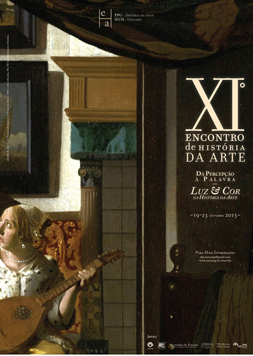Resumo
Este artigo tem por objetivo apresentar uma discussão de mudanças sociais ocorridas na área maia e na Mesoamérica por volta do século X d.C. a partir da análise de duas manifestações artísticas de duas diferentes cidades. Os murais encontrados na cidade de Bonampak, localizada no sul do atual México, no Estado de Chiapas, e os murais do Templo dos Jaguares de Chichén Itzá, localizada na Península de Iucatã. As duas cidades floresceram em temporalidades e espacialidades diferentes. Bonampak foi uma cidade
localizada próximo ao rio Usumacinta, importante rota de comércio e transporte no período pré-hispânico, com um período de esplendor entre 650 e 800 d.C., no qual exerceu um importante papel estratégico politica e economicamente na região. Já Chichén Itzá foi o sítio mais proeminente das terras maias do norte no período Clássico Terminal (800-1050 d.C.). Este assentamento foi um destacado centro regional, estabeleceu o controle de rotas comerciais e de bens de consumo de luxo, além de desempenhar uma posição de coletor de impostos a sítios menores subjugados ao seu poder (COBOS, 2001) (NAVARRO, 2012).
Referências
BAXANDALL, Michael. O Olhar Renascente. Pintura e Experiência Social na Itália da Renascença. Rio de Janeiro: Paz e Terra, 1991.
CHARTIER, Roger. “Images”, Dicctionnaire des sciences historiques. Paris: PUF, 1986.
COE, Michael D. The Maya. Londres: Thames and Hudson, 2011 (8ª Ed.).
STAINES CICERO, Leticia. Pintura Mural Maya. Revista Digital Universitária, UNAM. Vol. 5, Nº 7, 2004.
COBOS, Rafael. El Centro de Yucatán: de área periférica a la integración de la comunidad urbana en Chichén Itzá. Reconstruyendo la Ciudad Maya: el Urbanismo en las Sociedades Antiguas, editado por A. C. Ruiz, Ma. J. Ponce de León y Ma. Del Carmen Martínez. Madrid: Sociedad Española de Estudios Mayas, 2001.
COGGINS, Clemency Chase; SHANE III, Orrin C.. El Cenote de los Sacrificios. Tesoros Mayas extraídos del Cenote Sagrado de Chichén Itzá. México: Fondo de Cultura Economica, 1989.
GRUBE, Nikolai e KROCHOCK, Ruth J.. Hieroglyphic Texts from Chichén Itzá and Its Neighbors. IN:
KOWALSKI, Jeff Karl, KRISTAN-GRAHAM, Cynthia. Twin Tollans. Chichén Itzá an the Epiclassic to Early Postclassic Mesoamerican World. Dumbarton Oaks, 2011.
HOUSTON, Stephen; BRITTENHAM, Claudia; MESICK, Cassandra; TOKOVININE, Alexandre; WARINNER, Christina. Veiled Brightness. A History of Ancient Maya Color. Austin: University of Texas Press, 2009.
KOWALSKI, Jeff Karl; KRISTAN-GRAHAM, Cynthia. Chichén Itzá, Tula and Tollan. Changing Perspectives on a Recurring Problem in Mesoamerican Archaeology an Art History. IN: KOWALSKI, Jeff Karl, KRISTAN-GRAHAM, Cynthia. Twin Tollans. Chichén Itzá an the Epiclassic to Early Postclassic Mesoamerican World. Dumbarton Oaks, 2011.
KOWALSKI, Jeff Karl. What’s “Toltec” at Uxmal and Chichén Itzá? Merging Maya and Mesoamerican Worldviews and World Systems in Terminal Classic to Early Postclassic Yucatan. IN: KOWALSKI, Jeff Karl, KRISTAN-GRAHAM, Cynthia. Twin Tollans. Chichén Itzá an the Epiclassic to Early Postclassic Mesoamerican World. Dumbarton Oaks, 2011.
KURJACK, Edward B.. Conflicto en el arte de Chichen Itzá. Mayab, Publicación n.8, p. 88-96. Madrid: Sociedad Española de Estudios Mayas, 1992.
KROCHOCK, Ruth. The Hierogliphic Inscriptions and Iconography of the Temple of the Four Lintels and Related Monuments, Chichén Itzá, Yucatán, México. MA thesis, Universisty of Texas, Austin, 1988.
LÓPEZ AUSTIN, Alfredo e LÓPEZ LUJÁN, Leonardo. Mito y realidad de Zuyuá. Serpiente Emplumada y las transformaciones mesoamericanas del Clásico al Posclásico. México: El Colegio de México/FCE, 1999.
LOPÉZ AUSTIN, Alfredo; LOPÉZ LUJÁN, Leonardo. El pasado indígena. 2ª Ed. México: Fondo de Cultura Económica, 2001.
MACLEOD, Barbara; STONE, Andrea. The Hieroglyphic Inscriptions of Naj Tunich. IN: STONE, Andrea. Images from the Underworld: Naj Tunich and the Tradition of Maya Cave Painting. Austin: University of Texas Press, 1995.
MAGALONI, Diana. Technique, Color, and Art at Bonampak. IN:MILLER, Mary; MARTIN, Simon. (Ed.). Courtly Art of the Ancient Maya. Nova Iorque: Thames and Hudson, 2004.
MARTIN, Simon e GRUBE, Nikolai. Chronicle of the Maya Kings and Queens. Londres: Thames & Hudson, 2008.
MATHEWS, Peter. Notes on the dynastic sequence of Bonampak, part 1.Third Palenque Round Table Part 2 (1978).
MILLER, Mary Ellen. Arte y arquitectura Maya. México: Fondo de Cultura Económica, 2009.
MILLER, Mary Ellen; BRITTENHAM, Claudia. The Spectacle of the Late Maya Court. Reflections on the Murals of Bonampak. Austin: University of Texas Press, 2013.
MILLER, Mary e TAUBE, Karl. An Illustrated Dictionary of the Gods and Symbols of Ancient Mexico and the Maya. New York: Thames & Hudson, 1993.
NATALINO DOS SANTOS, Eduardo. Deuses do México Indígena. São Paulo: Palas Atena, 2002.
NAVARRO, Alexandre Guida. Kakupacal e Kukulcán. Iconografia e contexto espacial de dois reisguerreiros maias em Chichen Itzá. São Luís: Edufma, 2012.
NAVARRO, Alexandre Guida. Invasão tolteca em Chichén Itzá? Uma nova leitura da questão a partir da cultura material das Terras Maias Baixas do Norte. História, Franca, v. 29, n. 2, p. 279-294, Dec. 2010. Disponível em:
http://www.scielo.br/scielo.php?script=sci_arttext&pid=S0101 90742010000200016&lng=en&nrm=iso. Acessado em: 16 Out. 2015.
PIÑA CHÁN, Román. Chichén Itzá. La ciudad de los brujos del agua. México: Fondo de Cultura Economica, 1980.
RINGLE, William M.; BEY III, George J.. The Faces of the Itzas. IN: FASH, William L.; LÓPEZ LUJÁN, Leonardo. The Art of Urbanism. How Mesoamerican Kingdoms Represented Themselves in Architecture and Imagery. Washington: Dumbarton Oaks, 2009.
SCHELE, Linda; FREIDEL David. Una Selva de Reyes. La Asombrosa Historia de los Antiguos Mayas. México: Fondo de Cultura Económica, 1999.
SCHELE, Linda; MATHEWS, Peter. The Code of Kings. The language of seven sacred Maya temples and Tombs. New York: Touchstone, 1998. o: Fondo de Cultura Económica, 1999.
STONE, Andrea; ZENDER, Marc. Reading Maya Art: a hieroglyphic guide to ancient Maya painting and sculpture. Londres: Thames and Hudson, 2011.

Este trabalho está licenciado sob uma licença Creative Commons Attribution 4.0 International License.
Copyright (c) 2015 Daniel Grecco Pacheco e Fernando Dantas Marques Pesce
